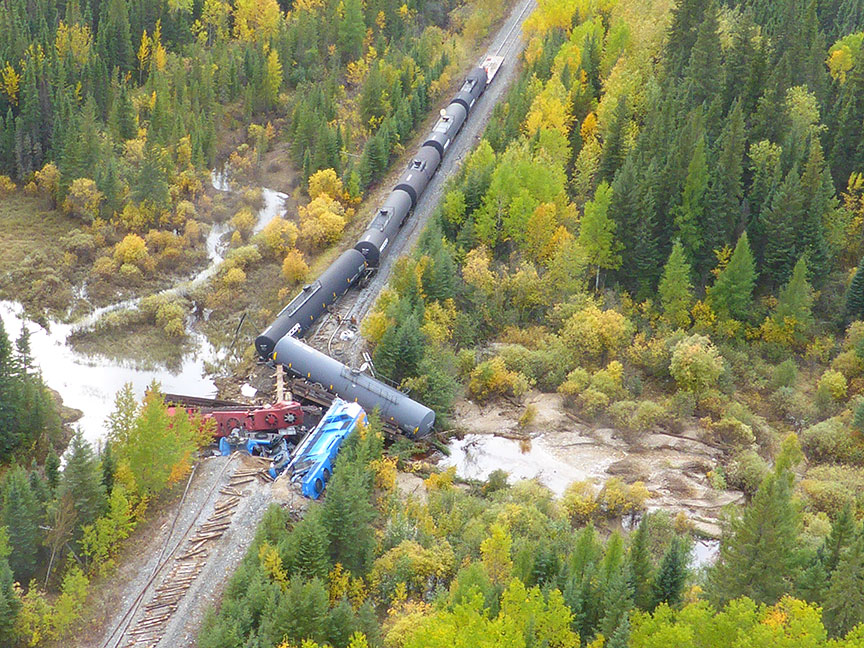Main-track train derailment
Hudson Bay Railway
Freight train 995-15
Mile 99.59, Wekusko Subdivision
Ponton, Manitoba
Hudson Bay Railway
Freight train 995-15
Mile 99.59, Wekusko Subdivision
Ponton, Manitoba
The occurrence
On , at about 1632 Central Daylight Time, Hudson Bay Railway freight train 995 was proceeding northward on the Wekusko Subdivision at 25 mph when the 3 head-end locomotives and the first 4 cars derailed after encountering a washout at Mile 99.59, near Ponton, Manitoba. All 3 locomotives were destroyed. The crew was trapped in the cab of the head-end locomotive. The locomotive engineer was seriously injured and was airlifted to a hospital in Thompson, Manitoba, in critical condition. The conductor was seriously injured and died of his injuries on site about 8.5 hours after the derailment. The locomotive fuel tanks were ruptured and released about 6800 litres of diesel fuel.
Media materials
News release
Track washout led to September 2018 fatal derailment near Ponton, Manitoba
Read the news release
Deployment notice
TSB deploys an investigator to a train derailment near Ponton, Manitoba
The Transportation Safety Board of Canada (TSB) is deploying an investigator to a Hudson Bay Railway train derailment that occurred on 15 September 2018 near Ponton, Manitoba. The TSB will gather information and assess the occurrence.
Investigation information
Download high-resolution photos from the TSB Flickr page.
Class of investigation
This is a class 2 investigation. These investigations are complex and involve several safety issues requiring in-depth analysis. Class 2 investigations, which frequently result in recommendations, are generally completed within 600 days. For more information, see the Policy on Occurrence Classification.
TSB investigation process
There are 3 phases to a TSB investigation
- Field phase: a team of investigators examines the occurrence site and wreckage, interviews witnesses and collects pertinent information.
- Examination and analysis phase: the TSB reviews pertinent records, tests components of the wreckage in the lab, determines the sequence of events and identifies safety deficiencies. When safety deficiencies are suspected or confirmed, the TSB advises the appropriate authority without waiting until publication of the final report.
- Report phase: a confidential draft report is approved by the Board and sent to persons and corporations who are directly concerned by the report. They then have the opportunity to dispute or correct information they believe to be incorrect. The Board considers all representations before approving the final report, which is subsequently released to the public.
For more information, see our Investigation process page.
The TSB is an independent agency that investigates air, marine, pipeline, and rail transportation occurrences. Its sole aim is the advancement of transportation safety. It is not the function of the Board to assign fault or determine civil or criminal liability.
